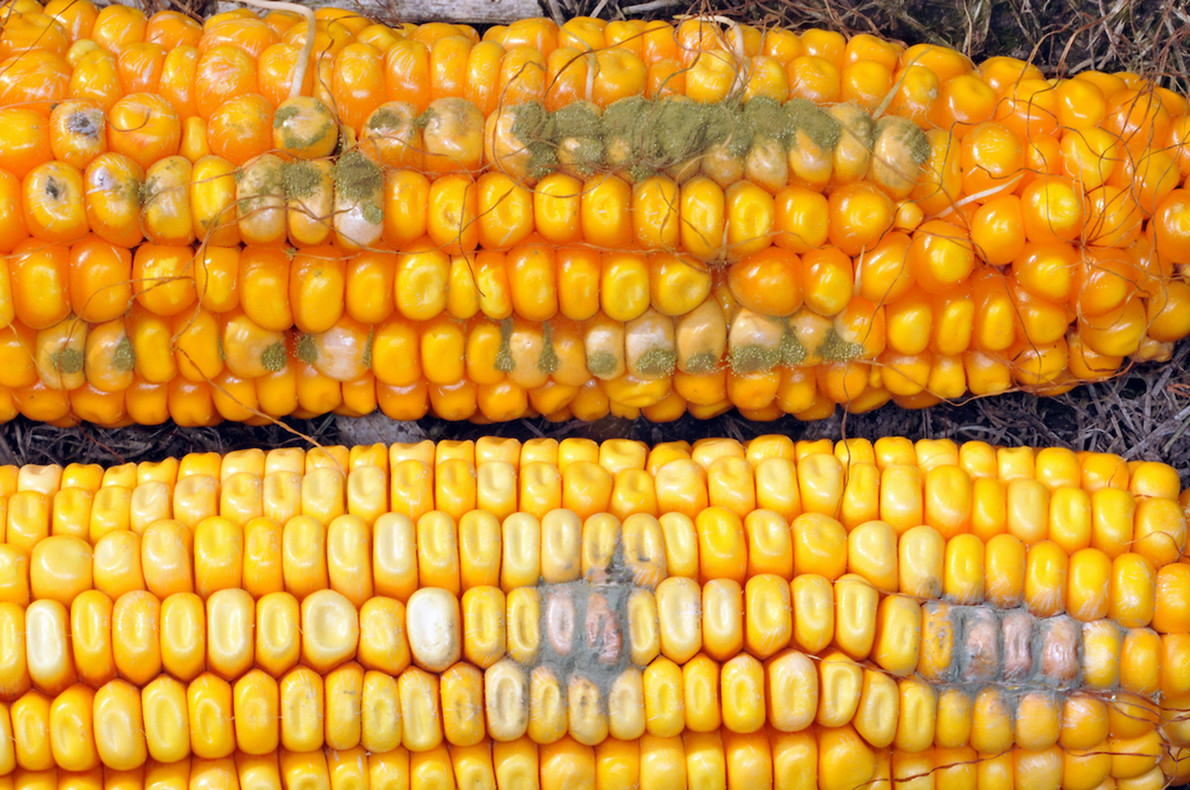Purdue Experts Urge Identification of Stalk and Ear Rots Now to Prioritize Harvest Decisions
Now is the time to evaluate fields for any stalk or ear rot symptoms, according to Darcy Telenko, Purdue field crops pathologist, and Dan Quinn, Purdue corn specialist.
The Purdue experts authored a more detailed article about stalk and ear rots on Sept. 5, 2025, in the Purdue Pest & Crop Newsletter.
They said that evaluating now will aid in making assessments about field harvest order and if there is a risk of mycotoxin contamination.
Before we delve too deeply, what are mycotoxins? According to the Crop Protection Network, “Mycotoxins are natural chemicals produced by certain fungi, some of which cause ear rots in corn. Mycotoxins are nonliving compounds that are byproducts that the fungi produce. Mycotoxins can have detrimental health effects to both humans and animals if they eat contaminated food or feed.”
Stalk rots can result in lodging, which increases harvest difficulty. These rots can be the result of both plant pathogenic causes (infectious diseases) and abiotic (non-living) factors, such as drought and flooding. “Either way, as stalk tissue becomes compromised below the main ear, the stalk may become brittle or weak and be prone to lodging,” said the Purdue experts.
“As the corn plant loses photosynthetic leaf area due to different stresses such as foliar disease and hot and dry conditions, the amount of carbohydrates available for dry matter deposition into the kernels is also decreased,” they said. “Therefore, plants respond by remobilizing non-structural carbohydrates from the lower portion of the stalk to supply the demand required by the developing kernels on the ear.”
“There are a number of plant pathogens that can cause stalk rot including, Anthracnose, Bacteria, Charcoal, Diplodia, Fusarium, Gibberella, and Pythium,” they said.
“It is time to check stalk integrity – check field by using the Push or Pinch Test by evaluating 20 plants in at least five random areas in a field,” they said.
- Pinch Test – grab the stalk somewhere between the lowest two internodes and pinch between your fingers to see if the stalk is strong enough to handle the force – if the stalk collapses, it fails.
- Push Test – push the stalk to a 30-degree angle – if it pops back up when released, it passes the test, if not it fails.
Threshold: 10% or more of the stalks fail then consider field for early harvesting to avoid risk for lodging.
Scouting for ear rots is also very important. The Crop Protection Network has a number of great resources to help scout and identify ear rots.
In Indiana, five ear rots can lead to mycotoxin production in corn. “They include Aspergillus ear rot, Gibberella ear rot, Fusarium ear rot, and Penicillium ear rot,” they said. “They can cause the production of five different mycotoxins in association with the different ear rot: Aflatoxin (Aspergillus), Deoxynivalenol or as also called DON/vomitoxin and Zearalenone (Gibberella); Fumonisins (Fusarium), and Ochratoxin (Penicillium and sometimes Aspergillus).”
“If a field has ear rot problems, it will be important to test the harvested grain lots for mycotoxins,” they said. Crop Protection Network’s “The Grain and Silage Sampling and Mycotoxin Testing” publication provides a good reference on how to take a sample or sub-samples and a list of professional laboratories available for grain testing. “In addition, harvest management for ear rots includes identifying and harvesting fields early, drying grain quickly to below 15% moisture, and storing in dry and cool conditions to limit fungal growth and mycotoxin accumulation,” they said.
Due to increased reports of mycotoxin contamination in corn in the last few years, Purdue will again be conducting a survey of Indiana grain for mycotoxin testing and collecting data for forecasting model validation in 2025. If you have fields of concern and want to participate, please reach out to Darcy Telenko at dtelenko@purdue.edu to get more information and a sample protocol.
Access the Crop Protection Network resources at: https://cropprotectionnetwork.org/. Find Telenko and Quinn’s original article with additional details in the Purdue Pest & Crop Newsletter, https://extension.entm.purdue.edu/newsletters/pestandcrop/.

Aspergillus (top), and Penicillium (bottom) Ear Rots, Photo by Purdue University
